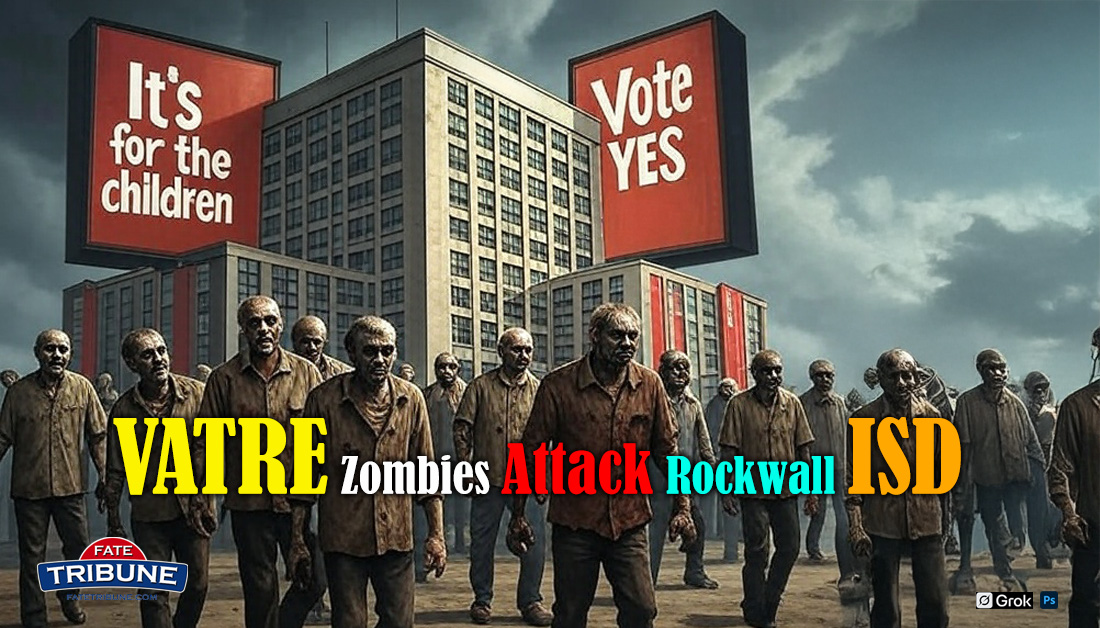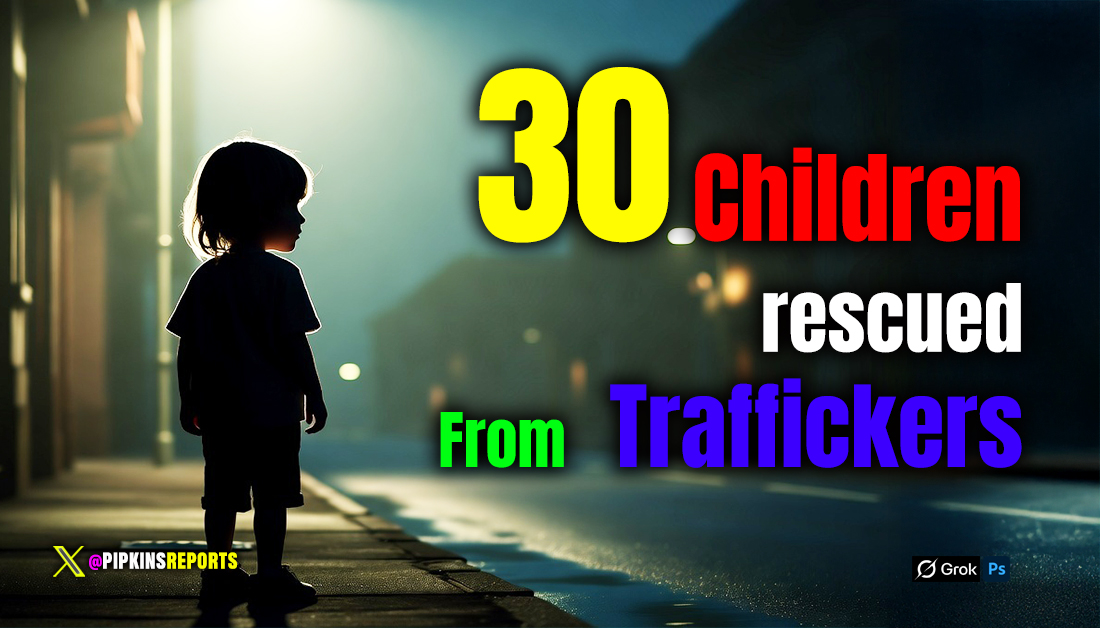
Rockwall ISD’s New VATRE: A Tax Hike Disguised as Compassion
Rockwall ISD is once again coming to the voters with hat in hand, this time proposing another Voter-Approval Tax Ratification Election (VATRE). If you’ve listened to their messaging, you’ve heard carefully crafted lines about “funding for children,” “supporting teachers,” and “keeping schools safe.” Their webpage even declares, “Unlike a school bond election, a VATRE does not create new debt for the district.”
What they hope you don’t notice—because it’s buried under emotional appeals and PR spin—is that the VATRE is, in fact, a property tax increase. By their own admission, if voters approve this measure, the tax rate will be set at $1.0669 per $100 valuation, which translates into a four-cent net tax increase. That means more money coming out of your pocket in a time when inflation, grocery bills, and housing costs are already crushing Texas families.
This isn’t about children. It’s about money. And Rockwall ISD is hoping you won’t look too closely.
What Rockwall ISD Doesn’t Want You to Focus On
The district’s page admits the VATRE would generate $16.5 million more in local funding, supposedly earmarked for teacher pay, special education, and security measures. The spin is clever: they frame it as “just” $13 a month for the average household. But what they won’t tell you is that taxes always move one direction—up. This VATRE may be four cents today, but it sets the precedent for more tomorrow.
Let’s be clear: this is not a “cost-saving” measure, despite their claims. It is a transfer of wealth from taxpayers to the district’s administrators, who have a long history of mismanaging resources.
The Emotional Blackmail Campaign
If you’ve lived in Rockwall County for any length of time, you’ve seen this playbook before. School officials and their allies will:
- Claim it’s for the children. Oppose the VATRE? Then you must hate kids. Expect to hear warnings about larger class sizes, fewer extracurriculars, or cuts to beloved programs if this measure fails. They want you to feel responsible for hypothetical suffering.
- Invoke teacher martyrdom. We’ll be told, once again, that teachers are spending out of pocket for classroom supplies. While it is true that many teachers sacrifice for their students, it’s also true that RISD’s administration allocates significant funds to bureaucracy, consultants, and pet projects before putting money where it actually matters—the classroom. Throwing more taxpayer dollars into the same broken system doesn’t solve the problem.
- Raise the safety alarm. In recent years, “safety and security” has become the go-to justification for more spending. But safety has no end point. How much is “enough”? The district has yet to prove that previous funds earmarked for safety have been used effectively.
And when emotional appeals fail? That’s when the shaming begins. Dissenters will be accused of being anti-education, anti-child, or even anti-teacher. They will call you selfish, greedy, or ignorant. This is the district’s last refuge: if persuasion doesn’t work, intimidation might.
The Machine Behind the Messaging
This isn’t just a few parents or administrators asking nicely. Rockwall ISD has quietly activated a network of political action committees (PACs) and advocacy groups to push the VATRE. Teachers are being fed talking points and coached on how to present the measure to their friends, neighbors, and church groups. The teachers’ union is involved too, ensuring the campaign looks like a grassroots movement when, in reality, it is an orchestrated lobbying effort funded by taxpayers’ own money.
Let’s not pretend otherwise: this is propaganda. And it’s designed to manipulate the very people footing the bill.
Who Really Benefits?
The district says this money will go toward “teacher and staff pay, underfunded special education, and safety.” But let’s ask a basic question: why are these essential services always the first to be threatened when districts want more money?
Why not cut bloated administration salaries first? Why not trim back the endless layers of consultants, contractors, and bureaucratic staffers who never step foot in a classroom? Why not prioritize spending for the essentials before asking taxpayers for more?
The answer is simple: threatening “the children” is politically effective. Bureaucrats know that no parent wants to imagine their child losing out on opportunity, so they dangle the worst-case scenario in front of voters to secure more funding.
The Conservative Case Against the VATRE
We believe in strong schools, but strong schools are not the same as ever-growing school budgets. Accountability matters. Stewardship matters. If Rockwall ISD cannot manage its existing funds responsibly, why should voters reward them with more?
Texans are already overtaxed. Property taxes in Rockwall County are among the highest in the state. Families are struggling under skyrocketing appraisals, utility hikes, and inflation. The district’s message—“It’s just $13 a month”—is insulting. For many families, that’s groceries, gas, or part of a prescription co-pay. In a time when every dollar counts, the district wants to take more.
The VATRE is not about helping children. It is about feeding a system that always wants more but refuses to live within its means.
Conclusion: Hold the Line
On Election Day, Rockwall County voters will face a simple choice: approve another tax increase, or demand accountability.
If you oppose the VATRE, you’re not against children. You’re not against teachers. You’re for responsible government. You’re for prioritizing classroom needs over bloated bureaucracy. You’re for families already struggling to stay afloat in a tough economy.
The district will try to make you feel guilty. They will tug at your heartstrings and, if that fails, they will call you names. Don’t fall for it.
The VATRE is a tax increase, plain and simple. Rockwall ISD doesn’t need more of your money. They need to spend what they already have more wisely.
Vote NO on the VATRE.

Fate, TX
Developers, Builders, and Political Insiders Fuel “Vote Yes for Rockwall ISD” PAC

Rockwall, TX – When money talks, it doesn’t whisper — and in Rockwall, it’s shouting from billboards, mailers, and TV ads. Behind the polished “Vote Yes for Rockwall ISD” campaign urging residents to support the district’s VATRE (Voter-Approved Tax Rate Election) lies a familiar cast of Texas developers, contractors, and political insiders — all with deep pockets and deeper interests in keeping the district spending big.
While the PAC’s glossy flyers and heartfelt slogans suggest it’s a grassroots movement of teachers and parents “standing up for students,” the campaign finance records tell a much different story. In reality, the PAC was created, funded, and operated by people who stand to gain financially from Rockwall ISD’s continued expansion.
A PAC Built by Developers, For Developers
The Vote Yes for Rockwall ISD PAC was born on August 19, 2025. That same day, it received its first $10,000 — seed money courtesy of Meredith and Ryan Joyce, owners of a land development consulting firm that works with both commercial and residential projects across Texas.
It was an auspicious start — and a revealing one. The Joyces’ business depends on district growth: more schools, more infrastructure, more construction. In short, higher taxes mean higher contracts.
A few weeks later, the second $10,000 came rolling in from Terra Manna, LLC, a real estate development and land management company led by Bobby Harrell and Bret Pedigo. Terra Manna specializes in large-scale residential projects — the very sort of developments that flood school districts with new students and new tax demands.
Then came another $10,000 from Northstar Builders Group, a firm specializing in — of all things — school construction and development. The irony practically writes itself.
If the VATRE passes, Rockwall ISD keeps spending, schools keep expanding, and developers keep building. It’s a self-perpetuating cycle of “growth” — for them.
The Builders’ Ball: Who Really Funds “Vote Yes”?
The PAC’s donor list reads less like a community support roster and more like a who’s who of Texas construction and development.
At the top tier:
- Joeris General Contractors, LLC – $5,000
- Z Constructors Nationwide – $5,000
- Matt Zahm (Z Constructors) – $5,000 (personally)
- RPRE, LLC – $3,500 (real estate brokerage and development firm)
These are not concerned citizens hoping to keep classrooms funded — these are professionals whose livelihoods are directly tied to district spending and capital projects.
Add to that a lineup of $2,500 donors, including:
- Chris Harp Construction
- Satterfield & Pontikes Construction, Inc.
- Glenn Partners (Architectural Firm)
- Billy & Julie Burton (private)
Then there’s the $2,273 in-kind donation from State Representative Justin Holland and his wife, Neely, for what they listed as “hats.”
$2,273 worth of hats? That’s either a new fashion trend in political branding — or a convenient way to funnel campaign merchandise under the radar. Holland, a familiar name in local politics, has long been an ally of the developer class, and his support here fits neatly into the pattern.
Other mid-level donors include Jason Volk Consulting, Noelle Fontes, and Brian Berry at $2,000 apiece.
At the $1,500 mark, the donor pool widens to include Elite Landscaping, PCI Construction, Skorburg Company, and Hanby Insurance, LLC — all companies that directly benefit from ongoing construction and development contracts in fast-growing communities like Rockwall.
Follow the Money — and the Math
In total, the PAC has reported $96,068 in contributions. But here’s the number that matters: $89,273 — or 93% — came from developers, builders, and real estate professionals.
The PAC’s promotional materials claim they’re “standing with teachers.” Yet only about 8% of all donations — under $1,000 each — came from teachers or district employees.
In other words, the people being used as the public face of this campaign are the least financially involved in it.
The illusion of grassroots support masks what is, in fact, a highly coordinated and well-funded lobbying effort — one aimed at convincing taxpayers to fund the very projects that enrich the PAC’s donors.
Big Money, Bigger Ads
The spending patterns are just as revealing. Since August, Vote Yes for Rockwall ISD has spent more than $27,000 on flyers and mailers, $9,000 on billboards, and even $3,000 on television ads — a heavy push for a local tax election.
They’ve also purchased $1,250 in ad space in Blue Ribbon News, the same publication that ran a “news article” touting the VATRE’s supposed benefits. The placement wasn’t coincidental — it was strategic.
And then there’s the expense that raised more than a few eyebrows: a $435.40 reimbursement to Meredith Joyce for “Car Polish Supplies.”
Car polish. From the same person who donated $10,000 in seed money.
One has to wonder what, exactly, was being polished — the campaign’s image, or something a bit shinier?
The Real Stakeholders: Not the Kids, Not the Teachers
Let’s be honest: when developers and construction firms pour nearly six figures into a local tax election, it’s not out of civic virtue or classroom compassion. It’s because they see a return on investment.
Every new bond, every tax hike, every “yes” vote translates into another round of district-funded construction — and another series of lucrative contracts.
Meanwhile, teachers — the supposed heart of the movement — are relegated to bit players. Their donations are symbolic at best, swallowed up in a sea of developer dollars.
Even worse, the campaign’s slick messaging exploits their image. Smiling teachers in front of whiteboards, holding “Support Our Schools” signs, while the fine print reads like a blueprint for cronyism.
Political Influence Runs Deep
The fingerprints of political insiders like Rep. Justin Holland only reinforce the perception that this isn’t about education — it’s about influence.
By lending his name (and hats) to the campaign, Holland helps cloak the PAC’s true motives under a veneer of community support. But his connections to the donor class are no secret.
When state legislators, developers, and contractors align to push a local tax increase, taxpayers should pause and ask: Who benefits most from this vote?
Spoiler: it isn’t the students or the teachers.
Manufactured Consent
The “Vote Yes for Rockwall ISD” campaign is a textbook case of manufactured consent. Using big money, polished marketing, and local political connections, the PAC is attempting to sway residents into supporting a measure that serves private interests far more than public good.
It’s the same formula seen across Texas — from bond packages to tax rate elections — where growth and progress are invoked as cover for sweetheart deals and endless construction booms.
Rockwall residents deserve to know who’s funding the message before they cast their ballots.
Because when nearly all the money pushing a tax increase comes from developers, builders, and their political allies, it’s no longer a campaign — it’s an investment.
And like any investment, the people writing the checks expect a return.
Bottom Line:
The Vote Yes for Rockwall ISD PAC isn’t a movement of parents or teachers. It’s a development-driven marketing operation, built to protect the flow of taxpayer money into the hands of builders, consultants, and political allies.
Rockwall voters should take note: when the people who build schools are the loudest voices demanding higher taxes “for the children,” it’s worth asking whether their real concern is education — or their next contract.
Featured
30 Children Saved in Texas Anti-Trafficking Operation

San Antonio, TX – More than 30 missing children were located and recovered during Operation Lightning Bug, a focused law enforcement initiative that stretched from July 28 through August 15. The operation, centered in San Antonio, unveiled not only the scale of child exploitation in the state but also the increasingly urgent role Texas agencies are being forced to play in combating trafficking amid a national border crisis.
The U.S. Marshals Service (USMS), working in concert with the San Antonio Police Department (SAPD) and the Lone Star Fugitive Task Force, spearheaded the mission. In an official release, USMS confirmed that “over 30 missing juveniles” were located, six confirmed trafficking survivors were removed from exploitation, five trafficking investigations were launched, three individuals were arrested for harboring runaways, and nine felony warrants were executed. Additionally, “over 120 missing juveniles [were] encouraged to return home, resulting in cleared entries from state and national databases.”
“The safety of our children is the safety of our communities, and justice demands that we protect those who cannot protect themselves,” said U.S. Marshal Susan Pamerleau for the Western District of Texas. “Through Operation Lightning Bug, we reaffirm our promise to safeguard the most vulnerable and strengthen the safety of our communities.”
SAPD Chief William McManus echoed the urgency behind the operation, stating, “Every suspect arrested, juvenile returned home, and survivor taken out of harm’s way matters. This operation demonstrates what can be achieved when law enforcement agencies unite to protect children.”
A Deliberate Target on Traffickers
Operation Lightning Bug was highly strategic. Teams reviewed every missing juvenile listed in both the Texas Crime Information Center and the National Crime Information Center databases, identifying cases where minors were deemed “at high risk of exploitation by traffickers and predators.” The operation included deputies from USMS offices in San Antonio, Del Rio, Midland, and Pecos, along with specialized SAPD units, including Missing Persons, Special Victims, covert teams, and Street Crimes personnel. Intelligence gathering allowed law enforcement to prioritize the most vulnerable cases and craft operational plans that led to direct recoveries and arrests.
SAPD’s Special Victims Unit interviewed each recovered child to determine whether they had been victimized. Trafficking survivors were immediately connected with Texas Health and Human Services and partner organizations to ensure long-term safety, mental health support, and reintegration assistance.
According to data from the International Center for Missing and Exploited Children, more than 330,000 minors were reported missing in the United States in 2024. While many are found quickly, those who lack stable homes or strong support systems are increasingly being targeted by trafficking rings.
Trafficking Thrives on Instability — and Policy Failure
Kirsta Leeburg Melton, founder and CEO of the Institute to Combat Trafficking, explained to Fox News that “trafficking is the exploitation of men, women and children for forced sex or forced labor by a third party for their profit or gain. That’s been around forever. What hasn’t really been around is people’s understanding of that crime and their knowledge that it’s happening everywhere.”
Melton further noted that traffickers prey on minors with “unstable home lives,” including those suffering from a lack of food, housing, family support, or emotional security. Technology serves as a primary tool for both predators and buyers, giving traffickers a near-invisible reach into vulnerable groups.
The unprecedented influx of undocumented minors during the Biden administration placed child welfare and trafficking oversight systems under intense strain—a crisis Texas law enforcement is still working to contain. By contrast, under President Trump’s term, stricter border enforcement and cartel disruption efforts made it significantly harder for trafficking networks to exploit cross-border routes at scale.
Texas Law Enforcement Takes the Lead
While Washington debates border security and trafficking enforcement in committee rooms, Texas law enforcement agencies continue to operate on the front lines. Operation Lightning Bug not only demonstrated the capability of state and federal joint task forces but also reinforced the necessity of cooperation among local agencies.
The Lone Star Fugitive Task Force, involved in the operation, consists of personnel from SAPD, the Bexar County Sheriff’s Office, Texas DPS, the Texas Attorney General’s Office, Naval Criminal Investigative Service (NCIS), New Braunfels Police Department, Texas Board of Criminal Justice OIG, Bexar County District Attorney’s Office, U.S. Immigration and Customs Enforcement (ICE), and the U.S. Marshals Service.
Under authority granted by the Justice for Victims of Trafficking Act of 2015, the U.S. Marshals Service now has explicit power to intervene in missing child cases regardless of whether a sex offender or fugitive is involved. This expansion allowed USMS to establish the Missing Child Unit, which now collaborates rapidly with nationwide law enforcement partners.
Operation Lightning Bug showed what can happen when that authority is fully exercised. It demonstrated what many Texans already know: when state and local agencies are given the backing, funding, and legal authority to act, children are saved, predators are taken down, and trafficking networks are disrupted—sometimes permanently.
A Crisis That Isn’t Slowing Down
In August, 11 children were reported missing in North Dakota—a state with a population of fewer than one million. Earlier, in June, authorities recovered more than two dozen children in a Florida operation described as a “first-of-its-kind missing child rescue operation.” These numbers indicate a nationwide escalation rather than isolated events.
As Texas continues to serve as a primary trafficking corridor due to its geographic proximity to the border and multiple interstate routes, state officials are increasingly forced to respond where federal leadership has not.
Child trafficking is often framed as a distant, foreign evil—but Operation Lightning Bug makes it clear: the victims live here. They disappear from neighborhoods, schools, shelters, foster systems, and broken homes. They are not statistics; they are Texas children, lost to predators who thrive in moments of policy weakness and exploit institutional gaps.
Texas Fights — Even as the Battle Grows Harder
There is no declared victory here. But there is proof of impact. Thirty children were found. Six survivors of trafficking were brought out of exploitation and into safety. Five new investigations are underway, likely mapping broader criminal networks. Over 120 missing children—some voluntarily gone, some running from abuse—were convinced to return home. Felony suspects are now in custody.
More importantly, the operation forced public attention on a crisis that prefers to operate in the shadows.
Every rescued child represents a life pulled off a path toward trauma, abuse, or death. Every warrant served sends a message that Texas still has teeth in its justice system. And every coordinated effort reminds traffickers that the state is watching.
Operation Lightning Bug is not the end—but it is a bright flash in the dark, signaling that Texas law enforcement is willing to strike, even when others won’t.
Featured
Texas Braces for “No Kings” Protests on October 18 – Areas to Avoid

As Texas gears up for a wave of nationwide “No Kings” protests scheduled for Saturday, October 18, residents in major cities across the state are advised to steer clear of key downtown and civic areas to avoid potential disruptions, traffic snarls, and heightened security measures. The anti-authoritarian demonstrations, organized under the banner of opposing perceived executive overreach by President Donald Trump, are expected to draw crowds echoing the large turnouts seen in June. While organizers promote peaceful assembly, past events have occasionally spilled into street closures and increased police presence.
The “No Kings” movement, which frames itself as a grassroots push against authoritarianism, has ties to left-wing groups including Indivisible and, according to state officials, Antifa networks previously designated as domestic terrorists by President Trump. Protests are slated in at least eight Texas locales, focusing on central hubs like city halls, parks, and capitol grounds. Here’s a rundown of the hot spots to sidestep:
| City | Location/Details | Time Window | Notes |
|---|---|---|---|
| Houston | March from Houston City Hall; Rally at Discovery Green (1500 McKinney St) | Noon–2 p.m. (rally); ~2 p.m. start (march) | Downtown core; expect pedestrian crowds and possible road blocks. |
| Houston (Suburbs) | The Woodlands (Lake Woodlands Dr & Six Pines Dr); La Porte City Hall (604 W Fairmont Pkwy) | 10 a.m.–1 p.m. (The Woodlands); 10 a.m.–Noon (La Porte) | Satellite events in suburban civic spots; lighter traffic but monitor local alerts. |
| San Antonio | Travis Park | 4–6 p.m. | Downtown landmark; anticipate street closures and elevated foot traffic. |
| Dallas | Pacific Plaza (401 N Harwood St) | Noon–3 p.m. | Central business district; business commuters should plan alternate routes. |
| Austin | Meet at Texas State Capitol, march ~1 mile to Auditorium Shores | 2 p.m. start | Traverses downtown; riverfront park finale could draw lingering crowds. |
| Fort Worth | 501 W 7th St | 11 a.m.–3 p.m. | 7th Street corridor in downtown; entertainment district vibe with protest overlay. |
| Arlington | Arlington Sub Courthouse (700 E Abram St) | 10 a.m.–Noon | Civic center area; near courts, potential for quick law enforcement response. |
| Plano | NE corner of Preston & Parker Rd (near Wells Fargo Bank) | 10 a.m.–Noon | Commercial intersection; suburban but busy with shoppers and drivers. |
| Laredo | Jett Bowl North | 10 a.m.–Noon | Local rec landmark; public gathering spot in a border community. |
These sites were compiled from announcements by organizers and local media reports. There will be many more protests in cities of all sizes. Authorities urge the public to check city traffic apps and news updates for real-time detours.
SIDELINE: Abbott Mobilizes Guard and DPS to Safeguard Austin
In a preemptive strike against potential unrest, Governor Greg Abbott has ordered the deployment of the Texas Department of Public Safety (DPS) and the Texas National Guard to Austin, where the democrat run city is expected to be the hub of the most violent and extreme protesters. The move, announced Friday, targets the capital city’s planned march amid concerns over links to Antifa groups, which President Trump recently labeled a domestic terrorist organization.
“Violence and destruction will never be tolerated in Texas,” Abbott stated in a release from his office. The surge includes state troopers, Special Agents, Texas Rangers, aircraft surveillance, and tactical assets, coordinated with the state’s Homeland Security Division to scan for extremist ties. This echoes a similar summer operation around the Capitol during prior demonstrations.
Local law enforcement will collaborate on arrests for any acts of violence or property damage, emphasizing deterrence over confrontation. Austinites near the Capitol or Auditorium Shores should prepare for a visible security footprint.
Behind the scenes, the “No Kings” push has drawn scrutiny for its funding streams, with reports pointing to deep-pocketed backers like George Soros’ Open Society Foundations (nearly $8 million to Indivisible since 2017), the Arabella Advisors network (over $114 million to affiliates from 2019–2023), and billionaire donors such as Hansjörg Wyss and Walmart heiress Christy Walton. While much of this support flows through dark-money channels for broader civic engagement, critics argue it amplifies protest logistics and messaging.
As the sun sets on these gatherings, it’s worth a final nod to the movement’s own rallying cry: There are no kings in America. And Donald Trump doesn’t see himself as one—for if he did, he wouldn’t allow protests like this to occur in the first place. Stay safe, Texas.




You must be logged in to post a comment Login